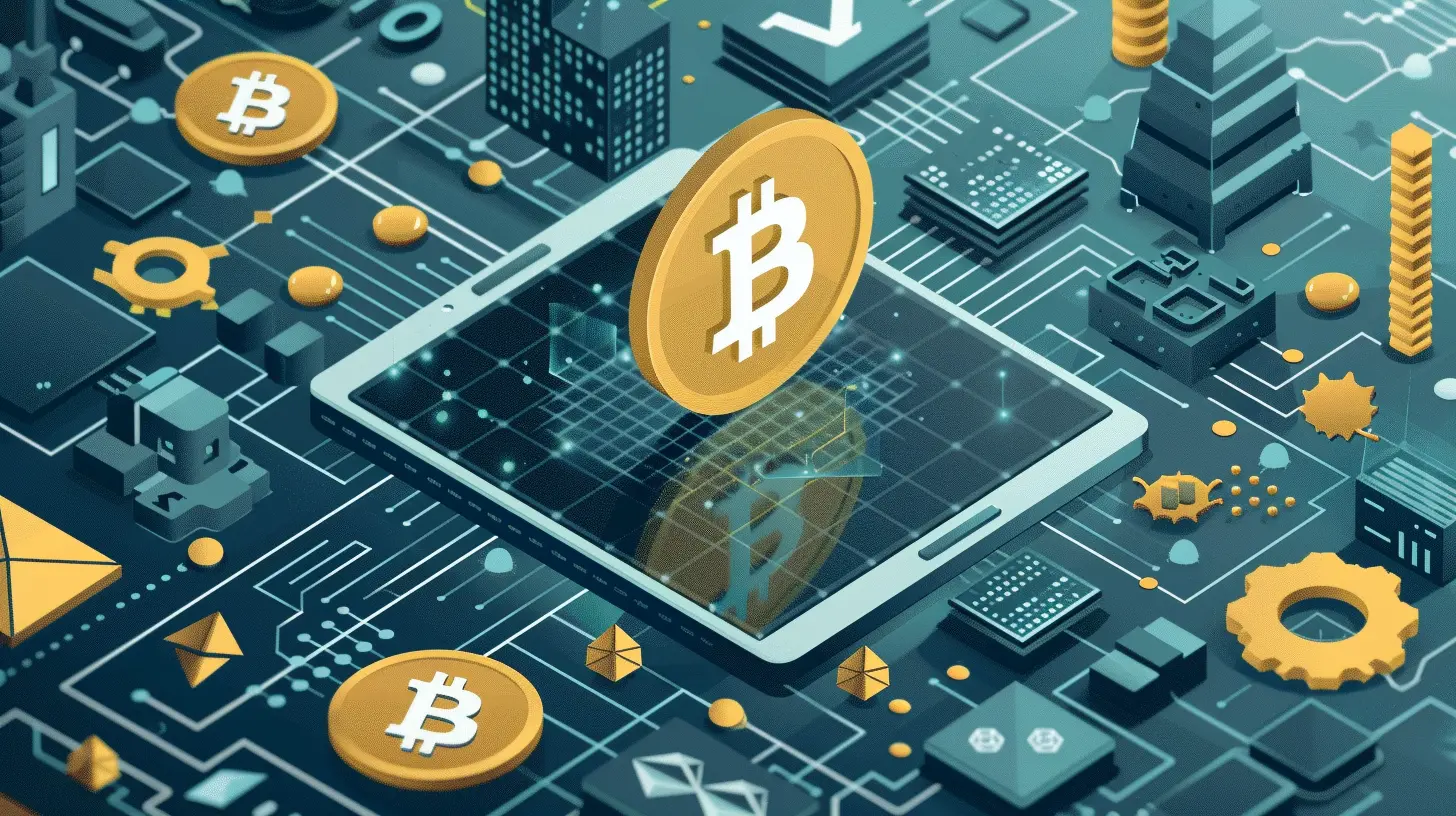Getting Started with Blockchain Technology for Beginners
20 May 2025
Blockchain technology has been a buzzword for a while now. You’ve probably heard it thrown around in conversations about Bitcoin, cryptocurrencies, or even tech innovations. But if you’re like many people, you might still be scratching your head, wondering what all the fuss is about. Well, grab a coffee, because we’re diving into the world of blockchain — and by the end of this article, you’ll have a solid understanding of what blockchain is, how it works, and why it’s revolutionizing the tech world.
Before we dive too deep, let’s break it down in the simplest terms possible.

What is Blockchain Technology?
At its core, blockchain is a digital ledger. Think of it like a notebook that records transactions. But unlike a regular notebook, this one is distributed across multiple computers (called nodes) around the world. Everyone with access to the blockchain can view and verify the transactions, but no single person controls it. That’s pretty cool, right?Now, imagine you and your friends are playing a game where you keep track of points. Instead of one person writing down everyone’s score, each of you has a copy of the score sheet. Anytime someone earns a point, it gets added to everyone’s sheet. If anyone tries to cheat by changing their score, the others will notice, and the cheat attempt will be rejected. That’s essentially how blockchain works.
But let’s take it a notch further.

How Does Blockchain Actually Work?
Blockchain operates on a chain of blocks (hence, the name). Each block contains three main things:1. Data: This could be transaction information, contracts, or even digital assets.
2. A Hash: This is a unique fingerprint of the block. Think of it like a digital ID.
3. The Hash of the Previous Block: This links each block to the one before it, creating a chain.
Whenever a transaction happens, it’s grouped together in a block with other transactions. Once the block is full, it’s added to the chain. Now, here’s where the magic happens. Every time a new block is added, it’s verified by multiple computers in the network. This process is called consensus.
If the majority of the network agrees that the block is valid (meaning no one tampered with the data), it’s officially added to the blockchain. Since each block contains the hash of the previous one, it’s nearly impossible to alter any information without changing every block that came afterward. This makes blockchain incredibly secure and tamper-resistant.
The Decentralized Nature of Blockchain
One of the biggest perks of blockchain is that it’s decentralized. There’s no central authority or middleman overseeing the transactions. Instead, every participant in the network has a copy of the blockchain. This decentralization is what makes blockchain so trustworthy. It’s not controlled by a single person, government, or corporation. As long as the participants in the network agree, the system works.Think of it like a group project where everyone has to sign off before any changes are made. If one person tries to submit something sketchy, the group will reject it. It’s a team effort, and everyone has a say.

Key Features of Blockchain Technology
To understand why blockchain is such a game-changer, let’s take a look at some of its most important features:1. Transparency
Since every participant in the blockchain network has access to the ledger, it’s fully transparent. Anyone can check the transactions that have taken place. It’s like having a public record that no one can tamper with.2. Immutability
Once a block is added to the blockchain, it can’t be changed. This makes the data secure and prevents fraud. It’s like writing something in permanent ink — but way more high-tech.3. Security
Because of its decentralized nature and the use of cryptographic hashing, blockchain is highly secure. Altering a single block would require changing every block in the chain, which is nearly impossible.4. Decentralization
No single entity has control over the blockchain. This removes the need for intermediaries, making transactions faster and cheaper. It’s like getting rid of the middleman in any deal — more efficient for everyone involved.5. Consensus Mechanism
This is the process through which blockchain participants agree on the validity of transactions. There are different types of consensus mechanisms (like Proof of Work, Proof of Stake), but they all serve the same purpose: ensuring that everyone in the network is on the same page.
What Are the Different Types of Blockchains?
Not all blockchains are created equal. There are different types designed for various purposes. Let’s break them down:1. Public Blockchains
These are open to anyone. Anyone can participate, view, and add to the blockchain. Bitcoin and Ethereum are examples of public blockchains. They are decentralized and trustless, meaning you don’t need to know or trust other participants to make transactions.2. Private Blockchains
As the name suggests, these are limited to a specific group of people. Think of it like a private club where only invited members can participate. Private blockchains are often used by companies for internal purposes.3. Consortium Blockchains
This is a hybrid between public and private blockchains. Instead of being open to everyone, it’s controlled by a group of organizations. It’s like a private blockchain, but with multiple entities in charge rather than just one.4. Hybrid Blockchains
These combine the best of both worlds — public and private. Some data can be made public, while other data remains private. It’s flexible depending on the needs of the participants.The Role of Cryptocurrencies in Blockchain
We can’t talk about blockchain without mentioning cryptocurrencies. In fact, the first real use case of blockchain was Bitcoin, the world’s first cryptocurrency. So, what’s the connection?Cryptocurrencies are digital currencies that run on a blockchain. They use cryptographic techniques to secure transactions and control the creation of new units. Bitcoin, Ethereum, and Litecoin are some of the most popular cryptocurrencies out there.
Think of cryptocurrencies as the fuel that powers blockchain. They incentivize participants (miners and validators) to maintain the network by offering rewards. Without cryptocurrencies, public blockchains would struggle to function.
Mining and Validators
In the case of Bitcoin and some other blockchains, new blocks are added through a process called mining. Miners solve complex mathematical puzzles to validate and secure transactions. Once a block is mined, it gets added to the blockchain, and the miner gets rewarded in cryptocurrency.Some blockchains, like Ethereum, are moving towards a Proof of Stake system, where participants (validators) lock up a portion of their cryptocurrency as collateral. In return, they get a chance to verify transactions and add new blocks to the chain.
Use Cases of Blockchain Beyond Cryptocurrencies
While cryptocurrencies are the most famous application of blockchain, they’re just the tip of the iceberg. Blockchain technology has a wide range of use cases that extend far beyond digital currencies.1. Supply Chain Management
Blockchain is revolutionizing supply chain management by making it easier to track goods from the point of origin to the final consumer. Imagine being able to trace your coffee beans from the farm to your cup. This transparency ensures authenticity and prevents counterfeiting.2. Digital Identity
One of the most promising applications of blockchain is in digital identity management. Since blockchain is secure and tamper-resistant, it’s ideal for managing personal data. You could have a digital ID that you control, eliminating the need for third-party identity verification.3. Smart Contracts
Smart contracts are self-executing contracts where the terms of the agreement are written into code. Once the conditions are met, the contract automatically executes. This eliminates the need for intermediaries like lawyers or notaries. It’s like having a vending machine for legal agreements — insert conditions, get results.4. Voting Systems
Blockchain could be used to create secure, transparent, and tamper-proof voting systems. By ensuring that each voter gets one vote and that votes can’t be altered, blockchain could help eliminate election fraud.5. Healthcare
In healthcare, blockchain can be used to securely store and share patient records. Since the data is immutable, it ensures that patient records are accurate and can’t be tampered with. Plus, patients could control who has access to their records.Challenges Facing Blockchain Technology
Despite all its potential, blockchain isn’t without its challenges. Here are a few hurdles the technology still needs to overcome:1. Scalability
Blockchain networks, especially public ones like Bitcoin, can struggle with scalability. The more people use the network, the slower and more expensive transactions can become. This is something developers are actively working to improve.2. Energy Consumption
Some blockchain networks, like Bitcoin, require enormous amounts of energy to operate. This has led to concerns about the environmental impact of blockchain technology.3. Regulation
Being a relatively new technology, blockchain operates in a gray area when it comes to regulation. Governments around the world are still figuring out how to regulate cryptocurrencies and other blockchain applications.
Conclusion: Is Blockchain the Future?
Blockchain technology is still in its early stages, but it’s already showing immense potential to transform industries far beyond just finance. From healthcare to supply chain management, the possibilities are endless. While there are still challenges to overcome, the decentralized, transparent, and secure nature of blockchain makes it an exciting area to watch.So, if you’re just getting started with blockchain, congratulations! You’re diving into a field that’s only going to grow in importance in the years to come. Whether you’re interested in cryptocurrencies, smart contracts, or the tech behind it all, blockchain is worth understanding. Welcome to the future!
all images in this post were generated using AI tools
Category:
Tech TutorialsAuthor:

Vincent Hubbard
Discussion
rate this article
3 comments
Judith Good
This article is a great starting point for anyone curious about blockchain technology. The clear explanations and practical tips make it accessible for beginners looking to understand the potential and applications of blockchain.
May 25, 2025 at 2:23 AM

Vincent Hubbard
Thank you for your kind words! I'm glad you found the article helpful for beginners exploring blockchain technology.
Kristen McClendon
Embrace blockchain now or be left behind—it's the future of innovation!
May 23, 2025 at 4:28 AM

Vincent Hubbard
Absolutely! Blockchain has immense potential for innovation. It's essential to explore it now to stay ahead.
Destiny McClary
This article provides a concise introduction to blockchain, making complex concepts accessible for beginners. It’s a helpful starting point for anyone interested in the technology.
May 21, 2025 at 10:27 AM

Vincent Hubbard
Thank you for the positive feedback! I'm glad you found the article helpful for beginners.


